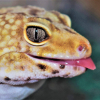I have used natural setups before so I will try to answer your questions. But first off natural setups are not the hardest and in my opinion the easiest, they are a lot less maintenance and it is nice knowing that your ants are in the most natural setting possible. Also, unlike formicariums you usually don't need to keep adding more setups as the colony matures because you can put them in a natural nest that is large enough to house the whole colony right off the bat.
Question 1: Isopods(roly polys), Millipedes, Earthworms, Aphids(sometimes)
Question 2: I don't think a better method is needed
Question 3: The best soil is one that is composed of about 50-60% clay, 20-30% loam, and about 10-20% sand, it is also beneficial to put about a cup or two of small pebbles in the soil as this can aid in stability. I fyou are just using about an inch thick layer on the bottom of the tank with the ant mainly nest under rocks or in wood then it doesn't really matter. Also, press in the dirt once it's put in, not to hard though.
Question 4: Don't moisturize the nest too much, especially if you are pouring the water in instead of spraying it. If you are pouring water in through a bottle or something, then make sure you don't pour it directly onto thier nest entrance. AND ALWAYS FREEZE WILD CAUGHT PREY FOR AN HOUR BEFORE PUTTING THEM INTO THE TANK TO FEED YOUR ANTS, if they do have worms or some other parasite then they will spread in the tank and take over! Always clean old dead bugs out of the tank to keep mold from taking over either.
![]()














